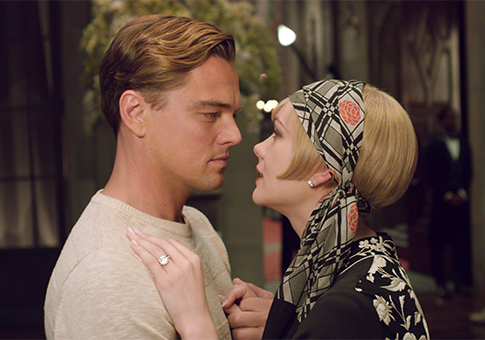There’s really not much use in being annoyed with The Great Gatsby as filmed by Baz Luhrmann, the hopped-up auteur who’s previously worked his magic on Moulin Rouge! and Romeo and Juliet. If you want a staid, "respectful" cinematic translation of F. Scott Fitzgerald’s classic, there are plenty of other options for you to choose from.
In a way, Luhrmann is perfectly suited for the source material. If you strip away the subtlety and nuance of Gatsby, you’re left with what amounts to a tawdry little melodrama, populated with cheating spouses, fortunes won and lost, fast cars, bright lights, big cities, etc., etc. As long as you understand what you’re getting yourself into—Luhrmann loves splashy and unnatural colors, loud noises, manic camera moves, and anachronistic soundtracks—you’ll be fine.
And yet there’s something oddly dispiriting about a filmmaker who, in his own hyper way, does his best to be utterly faithful to the words on the page, but doesn’t seem to recognize what those words mean.
I was expecting The Great Gatsby to be a celebration, rather than a critique, of the pursuit of wealth. One doesn’t hire Jay-Z to produce your soundtrack if one is looking for a humble reconsideration of the role money plays in society.
As every American high school student learns, Jay Gatsby (Leonardo DiCaprio) is the living, breathing representation of the vulgar pursuit of wealth. He thinks if he earns enough scratch he can buy the hand of Daisy (Carey Mulligan), a long-lost love currently married to the brutish Tom Buchanan (Joel Edgerton). We watch the pursuit through the eyes of Nick Carraway (Tobey Maguire), a would-be stockbroker who grows disgusted as he observes the racism and decadent opulence of the nouveau riche.
Luhrmann spares Gatsby from scorn, however, while heaping extra indignities on Tom. We are repeatedly encouraged to side with the bootlegger and stock swindler looking to steal another man’s wife. Luhrmann accomplishes this in part by jettisoning the relationship between Carraway and Jordan Baker (Elizabeth Debicki) and instead focusing on Nick’s affection for Gatsby.
It helps that DiCaprio plays Gatsby with just the right amount of charm and wariness and that Mulligan and Maguire look on him with open and wide-eyed desire. And Luhrmann wrings excellent performances out of everyone on screen—even if he does manage to miss the point of the book entirely.
Even then, though, the movie isn’t so bad. It’s actually pretty good right up until the final shot, when Carraway utters the novel’s famous closing line—"So we beat on, boats against the current, borne back ceaselessly into the past"—and looks at the title page of the manuscript he has written. Gatsby by Nick Carraway, it reads. And he stops, reaches for a pen, and, sure enough, adds "The Great" to the title. Without irony. And with more than a little admiration in his eyes.
It’s all a bit rich.
A note on the 3D, the format in which critics were required to screen this film. On the one hand, the stereoscopic format works perfectly with Luhrmann’s vision of flashy excess and overstimulation. On the other hand, however, the unavoidable darkness that comes with wearing 3D glasses dims his over-colored world.
One example: We are told, repeatedly and derisively by Tom, that Gatsby is wearing a pink suit at one point. But it’s a pale pink that, when one wears the required gear, comes across as white. I recommend you see this picture in 2D to experience the full spectrum of Luhrmann’s photography.
